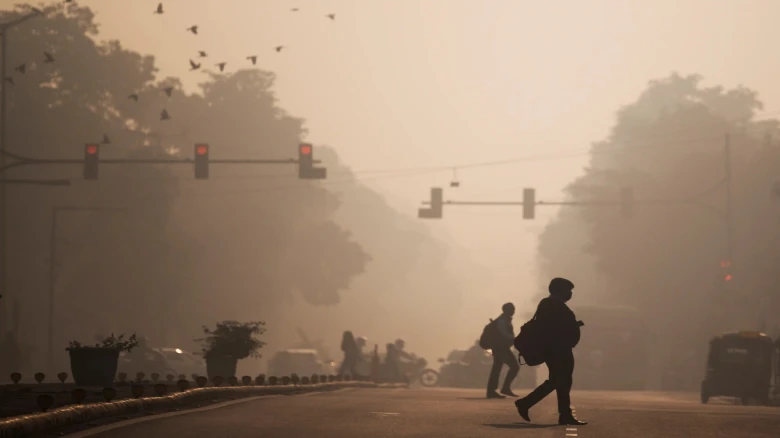Delhi's PM2.5 concentration level is currently 96.2 times higher than the amount recommended by the WHO...
Digital Desk: Delhi is currently the most polluted city in the nation after its air quality fell to the ' severe plus' category once more. In several areas of the capital, the Air Quality Index (AQI) is currently above 500. The Wazirpur monitoring station in Delhi reported the highest level at lunchtime, with an AQI level of 859.
Delhi's PM2.5 concentration level is currently 96.2 times higher than the amount recommended by the World Health Organization (WHO) for air quality.
Particulate matter 2.5, or PM2.5, is the term for fine, inhalable particles with sizes of typically 2.5 micrometers or less. While PM10, or particulate matter 10, is present in substantial amounts and has a diameter of 10 microns or less. The tiny size of PM2.5 pollutants allows them to reach the bloodstream and have a negative influence on health.
481 micrograms/cubic meter was the stated PM2.5 level. In Delhi and the nearby cities, PM10 was the primary pollutant. All Delhi air quality monitoring stations recorded more than 450 µg/m³ of PM2.5.
Farm fires and other factors
Data from the online air quality monitoring platform IQAir indicates that on November 2, the AQI level doubled in a single day, rising from 256 to 483. The AQI remained in the 150–200 range for the majority of October, but on October 28, it crossed the 200 mark and began to rise.
Aside from the industry and vehicle pollution in Delhi-NCR, another contributing element to the pollution is stubble burning in Punjab and Haryana.
NASA's Worldview satellite captured the stubble-burning occurrences on October 25 and 29, which corresponded with the jump in the AQI and farm fires in Punjab.
The number of crop-burning incidents rose sharply on October 26 and continued to rise the following day. However, on October 28, there was a steep fall, and on October 29, there was an exponential surge.
Notably, between September 15 and October 29, there was a 57% decrease in farm fires compared to the same period last year, despite the upward trend this season.
The Center put the third step of air pollution control measures into action, prohibiting buildings in regions with an AQI greater than 400.
Low wind speeds and vehicle emissions are additional elements that exacerbate the suffering. As of 1:30 p.m., the wind speed in Delhi was 7.4 km/h, according to IQAir. A strong wind aids in the dispersal of the contaminants.
Health Impact
For the fourth day in a row, the AQI was above 500. For a number of years, experts have cautioned that extremely dangerous pollution levels have a negative influence on people's health at all ages, even on foetuses.
People are breathing in air that is as bad for their health as smoking 25–30 cigarettes, to put things into perspective.
"From head to toe, there's no organ in the body that escapes the effects of air pollution. There is evidence to say that it causes obesity and asthma, says Dr. Arvind Kumar, a senior lung specialist at Medanta Hospital.
The European Environment Agency (EEA) states that exposure to air pollution, whether brief or prolonged, can cause a variety of illnesses, such as lower respiratory infections, worsened asthma, lung, trachea, and bronchus cancers, strokes, and chronic obstructive pulmonary disease.

Leave A Comment